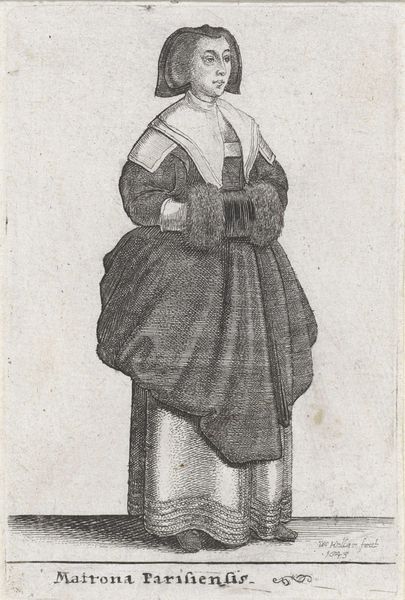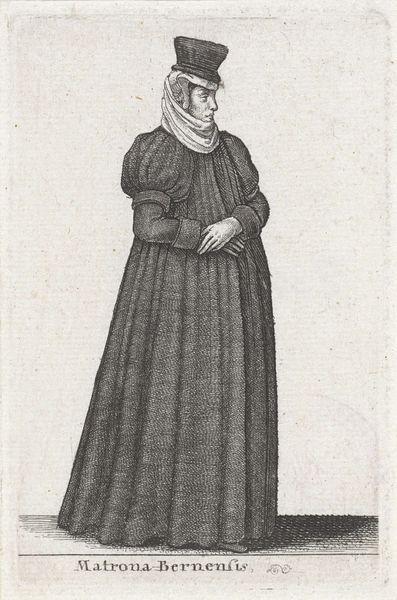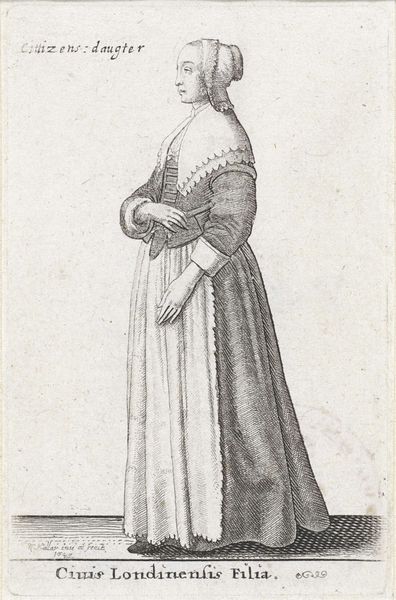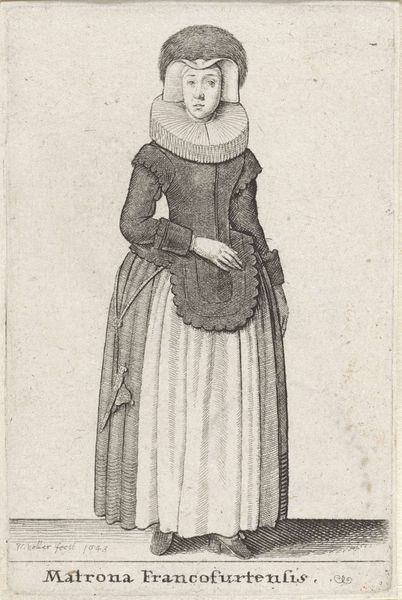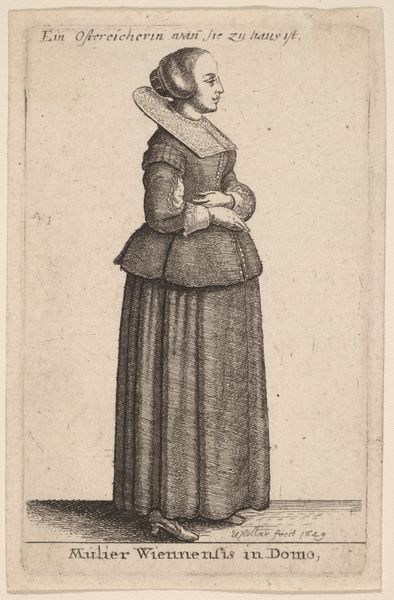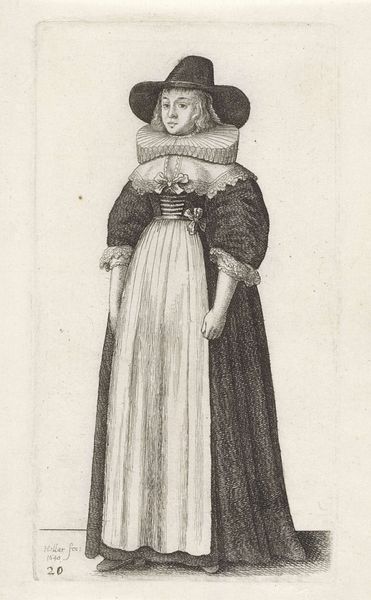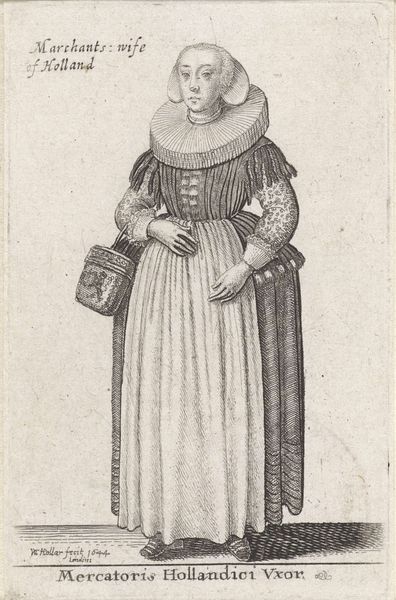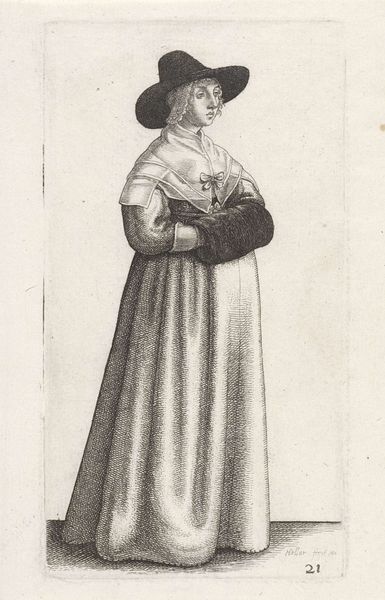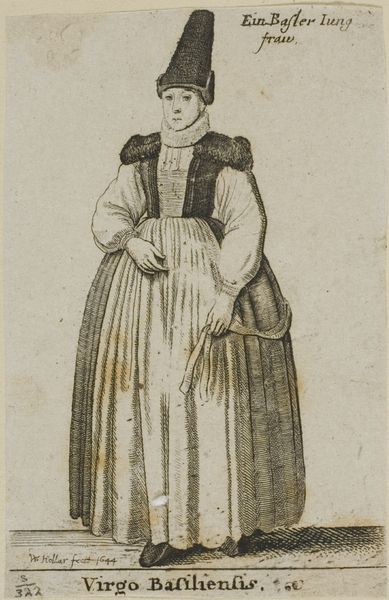
print, engraving
#
portrait
#
baroque
# print
#
old engraving style
#
portrait reference
#
engraving
Dimensions: height 90 mm, width 60 mm
Copyright: Rijks Museum: Open Domain
Curator: My word, she looks terribly uncomfortable. It's the Merchants wife of Paris isn't it? Editor: Indeed! This is an engraving dating back to 1643 by Wenceslaus Hollar, currently held at the Rijksmuseum. Let’s dive into its composition. The stark contrast immediately highlights her as the focal point against a neutral backdrop. Curator: Yes! Though, you know, more than the contrast, it's the corseting that gets me. The sheer… confinement. I imagine her silently pleading for a loosening of the laces! Did the fashion of the day really demand such structural…challenges? Editor: Undoubtedly. If we closely analyze the costume’s structure we note that its sharp lines and geometric detailing embody the aesthetic rigidity favored in Baroque portraiture, a fashion very far away from liberation as we understand it now. The clothing does become an allegory in and of itself. Curator: An allegory for being squished! All right, I'm being facetious. But I do wonder what stories those meticulous details could tell. Like, did she pick that fabric herself? Did she secretly long for something a bit more… flamboyant? Or, what was her real contribution to the merchants' affairs? Editor: These portraits of that period usually carried meanings which were obvious for the contemporaneous spectators, not so much now, though. Her costume can reveal volumes, or even her social standing—or her husband's expectations of how a merchants’ wife ought to present herself to the world. Curator: Right, layers upon layers. From social expectation to…well, many layers of clothes to peel off, indeed! Thank goodness, at least, for a sense of the lasting effect prints can create on generations of art lovers to ponder about those things. Editor: Indeed! There’s a rather captivating paradox embedded here. While Hollar captures the external and, some might say, quite strict elements of that particular era, the woman’s slightly evasive gaze feels almost modern. A certain defiance amidst the constraint. Curator: Definitely a defiant whisper. It's what keeps the portrait so deliciously, humanly, contradictory, and ultimately interesting even so many years later, you know? Editor: And that is exactly what makes it memorable and, certainly, deeply precious to study from different perspectives across time. Thank you!
Comments
No comments
Be the first to comment and join the conversation on the ultimate creative platform.

